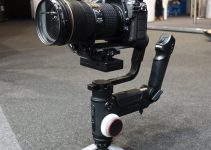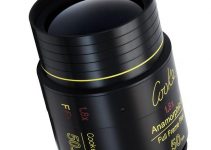Working with multiple cameras on set is not an unusual practice. In fact, it is widely used in filmmaking, especially for setups that combine the use of a traditional camera and a drone. However, the most challenging aspect of using such a combo is matching the color and exposure of each camera. It’s not a secret that all camera manufacturers have a different color science for their own products.
This means that out of the box, you will notice some apparent differences in your footage regarding overall color balance, exposure, contrast, and sharpness. If left untackled, this issue could affect the flow of your edits, thus drawing attention to itself and distracting your audience as a result. Luckily, this TravelFeels’ video explains what to look for when matching different shots from your A Camera and your drone.
The first step into matching the shots is by using a LUT, which can serve as a common ground to the overall aesthetic of your scene. To do this, create an adjustment layer and expand the duration of the layer to overarch your desired footage. After which, add a LUT to the layer. In Premiere Pro, you can do this through the Lumetri Color Panel and under the Basic Correction properties, navigate to your desired LUT.
Secondly, adjust the look you want for the scene starting with your primary camera. By doing so, you setup a point of reference which will help guide you as you’re matching the look of all the shots in your scene. Start your exposure adjustments by playing around with the contrast. In your color grading application of choice, play around with the contrast controls. If that doesn’t give the exact look you desire, you can fine-tune your settings by adjusting the shadows, midtones, and highlights of the captured footage.
Afterward, work on getting dialing in the colors of your shot using the color wheels. In this case, using the vectorscope will help you greatly as it will show you where your video is leaning towards in terms of color. If you see that the scope is too far into the blue area, counter with some orange. As a rule, this tool is particularly helpful in preserving skin tones to achieve a more balanced, cinematic look.
Once you’ve matched all the shots that utilized your A camera, it is now time to match the footage from your main camera and your drone. To do this, play around with the exposure and color settings as you did for your main camera shots. Refer back consistently to your main camera shots to keep the continuity of the overall aesthetic of the scene. Again, use your vectorscope as a point of reference to make the color matching process as painless as possible.
While the process of matching shots may take quite some time, you will be rewarded with a non-distracting series of footage that will flow much more smoothly, adding more production value and a higher level of professionalism to your project. So, make sure you are diligent enough in tackling this task and your effort will certainly pay off in the end.
[source: TravelFeels]
Disclaimer: As an Amazon Associate partner and participant in B&H and Adorama Affiliate programmes, we earn a small comission from each purchase made through the affiliate links listed above at no additional cost to you.
Claim your copy of DAVINCI RESOLVE - SIMPLIFIED COURSE with 50% off! Get Instant Access!





Here’s the tweet version of this article: get your A cam set, then use scopes and play with exposure/contrast until it looks right. ?